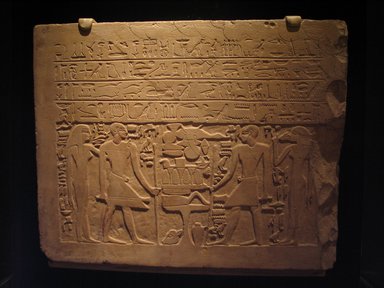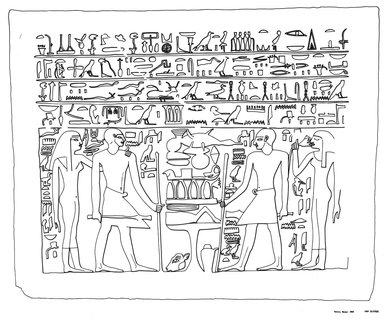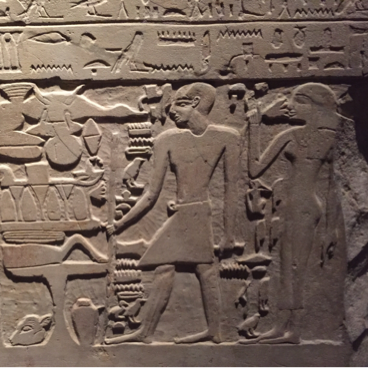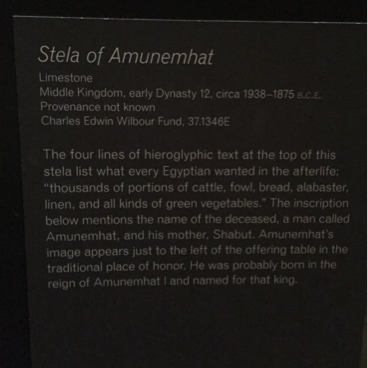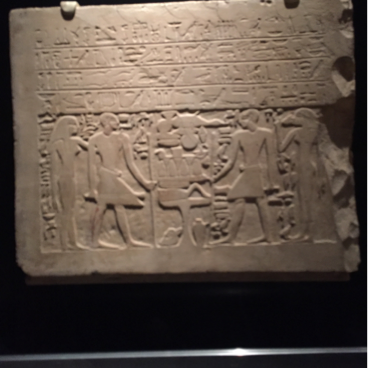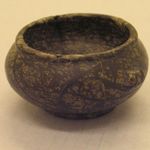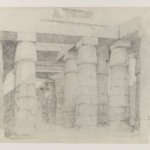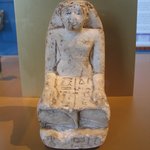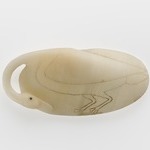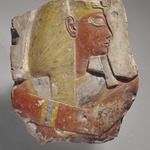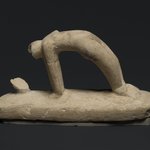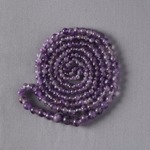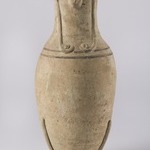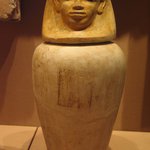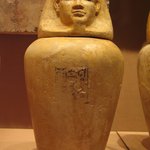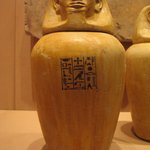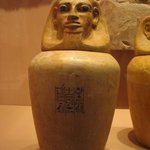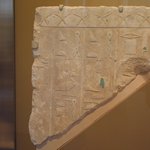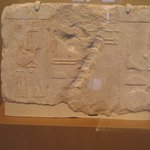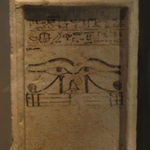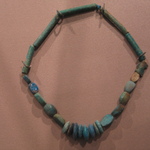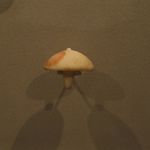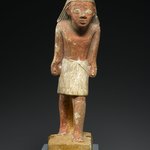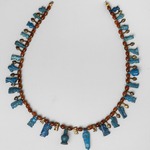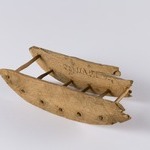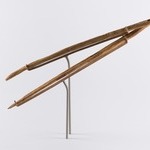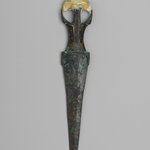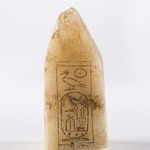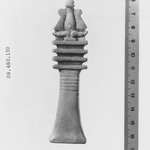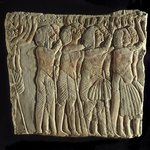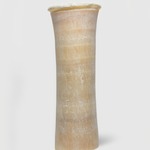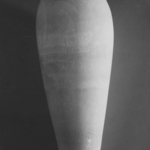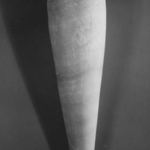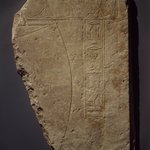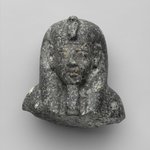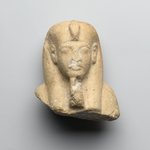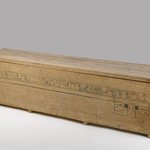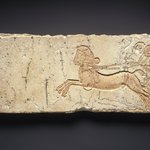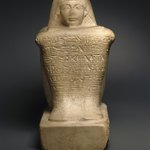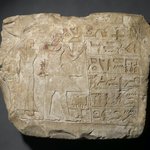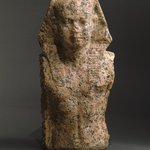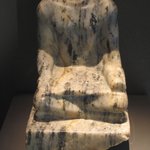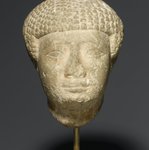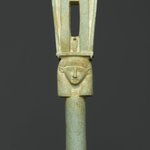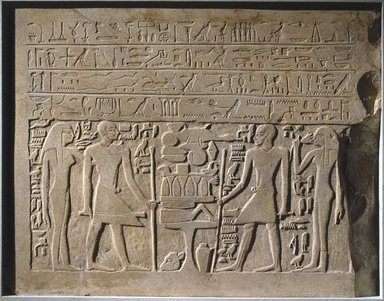

Stela of Amenemhat, ca. 1938–1875 B.C.E. Limestone, pigment, 17 × 21 × 2 1/2 in. (43.2 × 53.3 × 6.4 cm). Brooklyn Museum, Charles Edwin Wilbour Fund, 37.1346E. Creative Commons-BY (Photo: Brooklyn Museum, 37.1346E_SL1.jpg)

Stela of Amenemhat, ca. 1938–1875 B.C.E. Limestone, pigment, 17 × 21 × 2 1/2 in. (43.2 × 53.3 × 6.4 cm). Brooklyn Museum, Charles Edwin Wilbour Fund, 37.1346E. Creative Commons-BY (Photo: Brooklyn Museum, CUR.37.1346E_erg2.jpg)
Stela of Amenemhat
Egyptian, Classical, Ancient Near Eastern Art
The four lines of hieroglyphic text at the top of this stela list what every Egyptian wanted in the afterlife: “thousands of portions of cattle, fowl, bread, alabaster, linen, and all kinds of green vegetables.” The inscription below mentions the name of the deceased, a man called Amunemhat, and his mother, Shabut. Amunemhat’s image appears just to the left of the offering table in the traditional place of honor. He was probably born in the reign of Amunemhat I and named for that king.
MEDIUM
Limestone, pigment
DATES
ca. 1938–1875 B.C.E.
DYNASTY
early Dynasty 12
PERIOD
Middle Kingdom
DIMENSIONS
17 × 21 × 2 1/2 in. (43.2 × 53.3 × 6.4 cm) (show scale)



COLLECTIONS
Egyptian, Classical, Ancient Near Eastern Art
ACCESSION NUMBER
37.1346E
CREDIT LINE
Charles Edwin Wilbour Fund
EXHIBITIONS
MUSEUM LOCATION
This item is not on view
CAPTION
Stela of Amenemhat, ca. 1938–1875 B.C.E. Limestone, pigment, 17 × 21 × 2 1/2 in. (43.2 × 53.3 × 6.4 cm). Brooklyn Museum, Charles Edwin Wilbour Fund, 37.1346E. Creative Commons-BY (Photo: Brooklyn Museum, 37.1346E_SL1.jpg)
IMAGE
overall, 37.1346E_SL1.jpg. Brooklyn Museum photograph
"CUR" at the beginning of an image file name means that the image was created by a curatorial staff member. These study images may be digital point-and-shoot photographs, when we don\'t yet have high-quality studio photography, or they may be scans of older negatives, slides, or photographic prints, providing historical documentation of the object.
RIGHTS STATEMENT
Creative Commons-BY
You may download and use Brooklyn Museum images of this three-dimensional work in accordance with a Creative Commons license. Fair use, as understood under the United States Copyright Act, may also apply.
Please include caption information from this page and credit the Brooklyn Museum. If you need a high resolution file, please fill out our online application form (charges apply).
For further information about copyright, we recommend resources at the United States Library of Congress, Cornell University, Copyright and Cultural Institutions: Guidelines for U.S. Libraries, Archives, and Museums, and Copyright Watch.
For more information about the Museum's rights project, including how rights types are assigned, please see our blog posts on copyright.
If you have any information regarding this work and rights to it, please contact copyright@brooklynmuseum.org.
RECORD COMPLETENESS
Not every record you will find here is complete. More information is available for some works than for others, and some entries have been updated more recently. Records are frequently reviewed and revised, and we welcome any additional information you might have.
